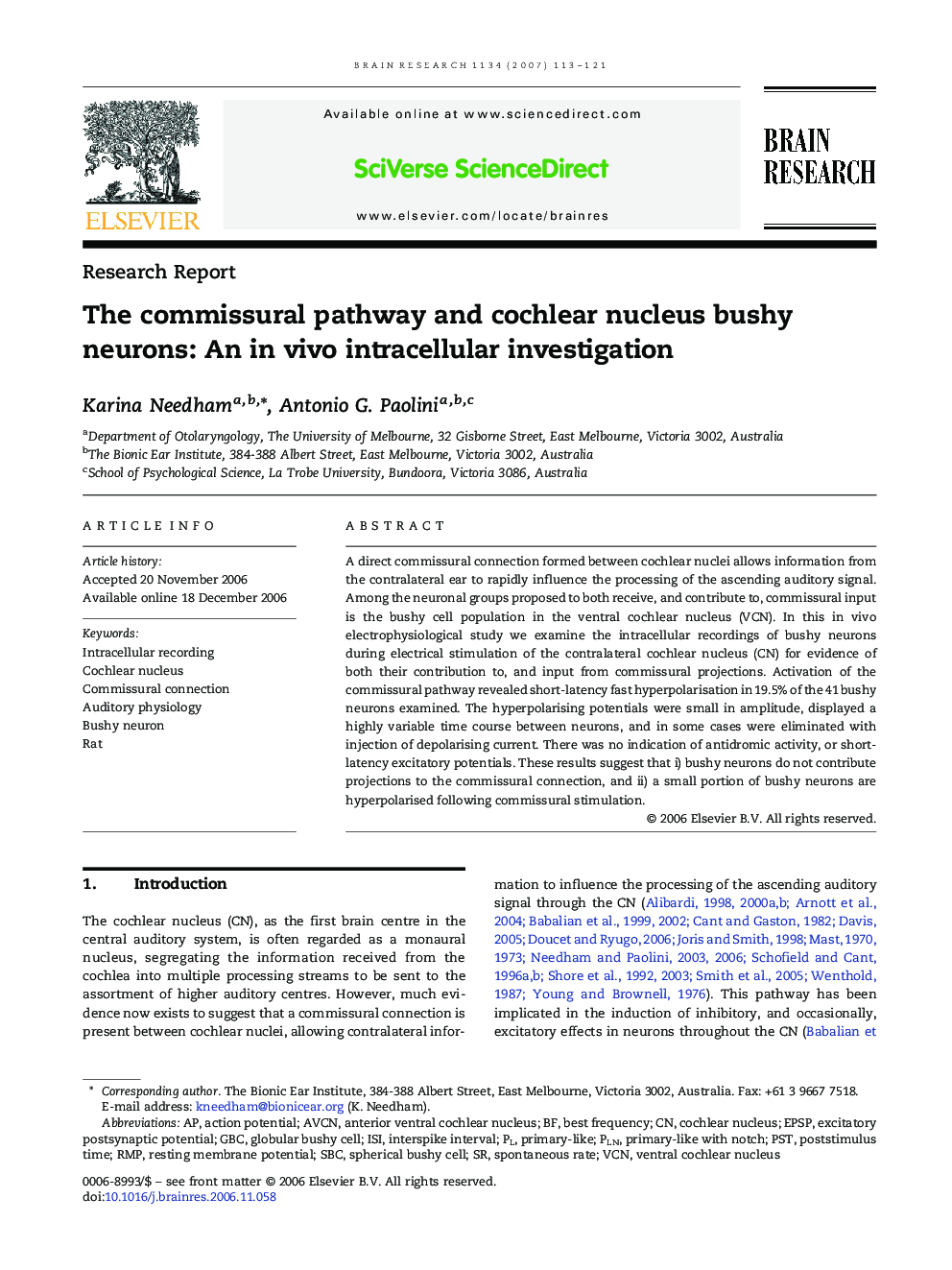| Article ID | Journal | Published Year | Pages | File Type |
|---|---|---|---|---|
| 4331591 | Brain Research | 2007 | 9 Pages |
A direct commissural connection formed between cochlear nuclei allows information from the contralateral ear to rapidly influence the processing of the ascending auditory signal. Among the neuronal groups proposed to both receive, and contribute to, commissural input is the bushy cell population in the ventral cochlear nucleus (VCN). In this in vivo electrophysiological study we examine the intracellular recordings of bushy neurons during electrical stimulation of the contralateral cochlear nucleus (CN) for evidence of both their contribution to, and input from commissural projections. Activation of the commissural pathway revealed short-latency fast hyperpolarisation in 19.5% of the 41 bushy neurons examined. The hyperpolarising potentials were small in amplitude, displayed a highly variable time course between neurons, and in some cases were eliminated with injection of depolarising current. There was no indication of antidromic activity, or short-latency excitatory potentials. These results suggest that i) bushy neurons do not contribute projections to the commissural connection, and ii) a small portion of bushy neurons are hyperpolarised following commissural stimulation.
